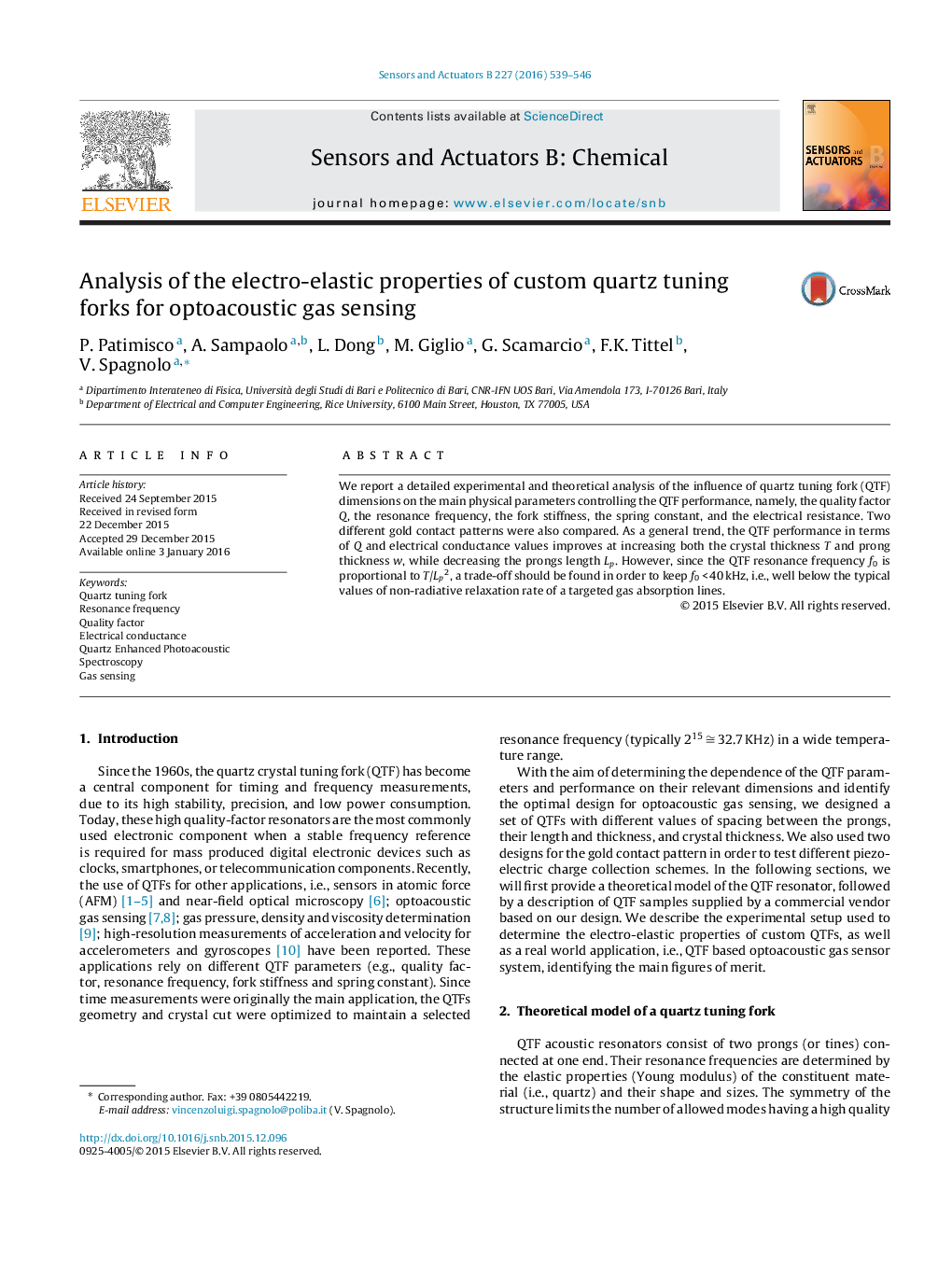| Article ID | Journal | Published Year | Pages | File Type |
|---|---|---|---|---|
| 7144758 | Sensors and Actuators B: Chemical | 2016 | 8 Pages |
Abstract
We report a detailed experimental and theoretical analysis of the influence of quartz tuning fork (QTF) dimensions on the main physical parameters controlling the QTF performance, namely, the quality factor Q, the resonance frequency, the fork stiffness, the spring constant, and the electrical resistance. Two different gold contact patterns were also compared. As a general trend, the QTF performance in terms of Q and electrical conductance values improves at increasing both the crystal thickness T and prong thickness w, while decreasing the prongs length Lp. However, since the QTF resonance frequency f0 is proportional to T/Lp2, a trade-off should be found in order to keep f0Â <Â 40Â kHz, i.e., well below the typical values of non-radiative relaxation rate of a targeted gas absorption lines.
Keywords
Related Topics
Physical Sciences and Engineering
Chemistry
Analytical Chemistry
Authors
P. Patimisco, A. Sampaolo, L. Dong, M. Giglio, G. Scamarcio, F.K. Tittel, V. Spagnolo,
